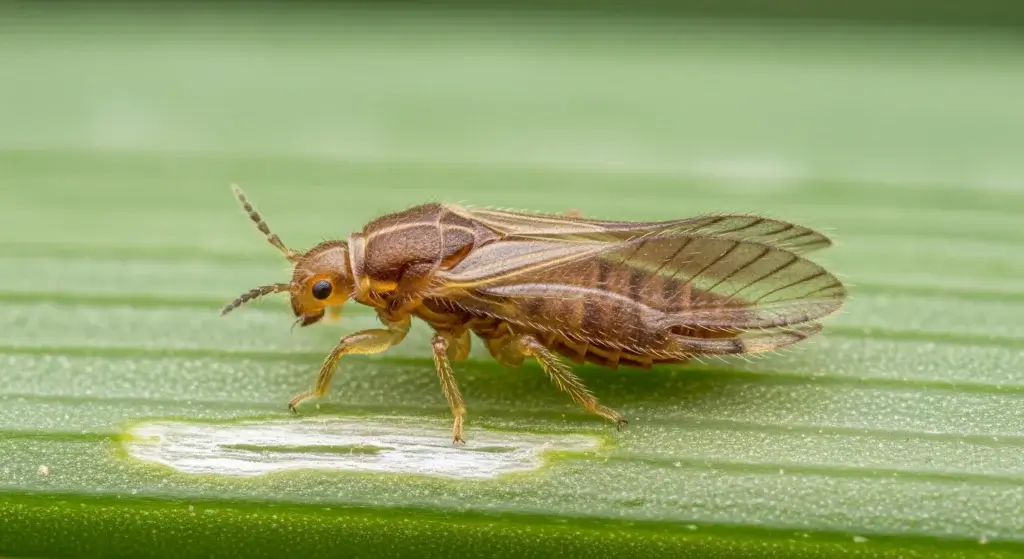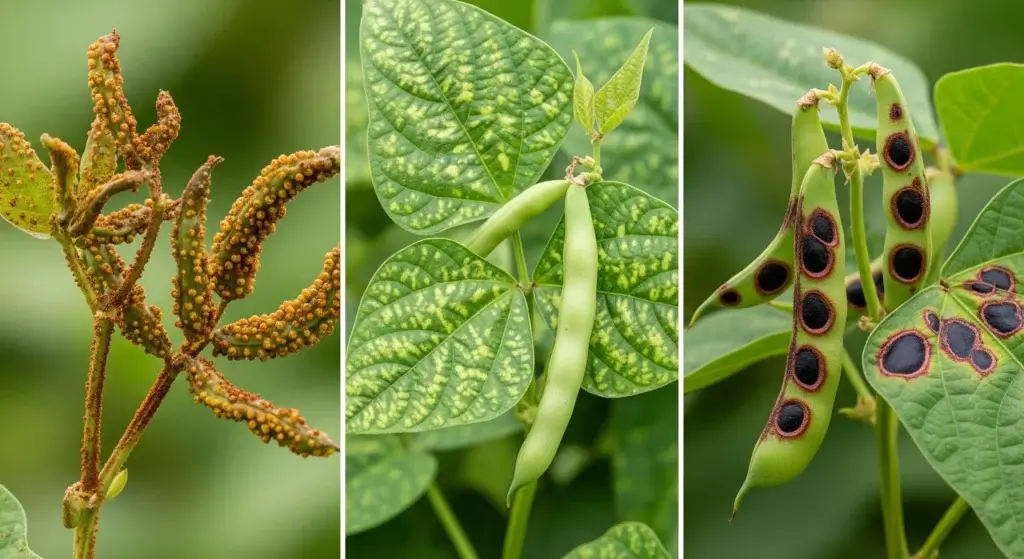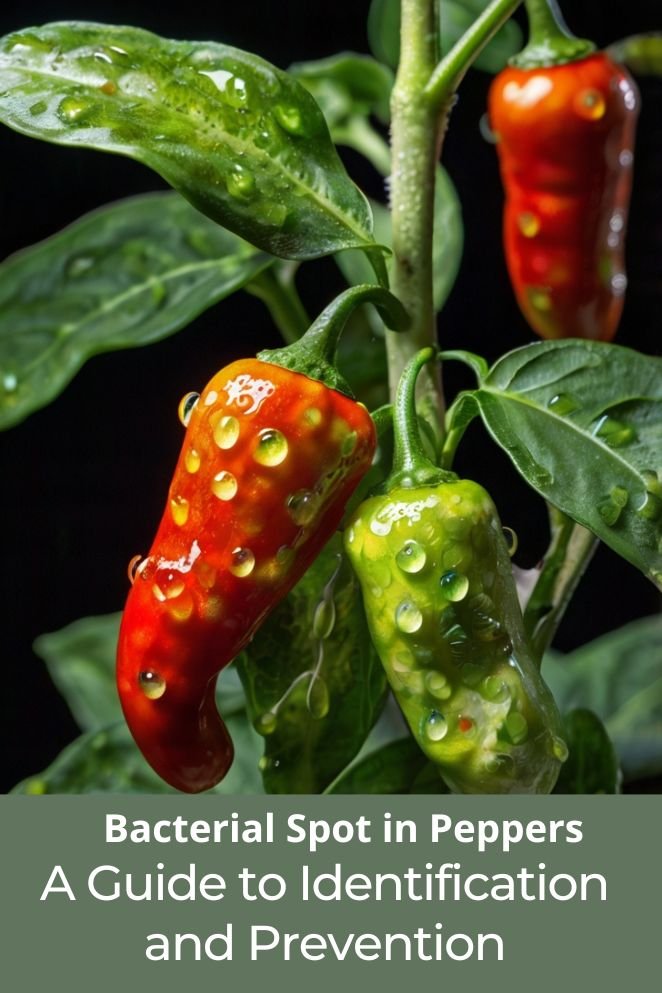
Bacterial spot on peppers is a common and devastating disease that can significantly impact pepper yields and quality.
As a gardener or farmer, it is essential to understand the causes, identification, and management of this disease to protect your crops.
In this article, we will delve into the world of bacterial spot on peppers, exploring its causes, symptoms, prevention, and treatment options.
What is Bacterial Spot?
Bacterial spot is a common disease that affects pepper plants, caused by a bacterium known as Xanthomonas campestris pv. vesicatoria.
This disease is highly contagious and can spread rapidly, making it a significant concern for gardeners and farmers.
Bacterial spot can spread in several ways:
- Water: Rain, irrigation, or splashing water can carry the bacteria from one plant to another.
- Contaminated tools: Gardening tools that aren’t properly cleaned can transfer bacteria between plants.
- Airborne transmission: The bacteria can also spread through the air, especially during windy conditions.
How to Identify Bacterial Spot
Identifying bacterial spot early is crucial for managing and controlling the disease in your garden or farm.
Here are the main signs and symptoms to watch for:
- Read also: Pepper Apocalypse? Prevent and Fix Blossom End Rot in Peppers
- Read also: Turn Up the Heat! Secrets on How to Grow Peppers Hotter
Leaf spots
One of the first signs of bacterial spot is the appearance of small, water-soaked lesions on the leaves.
These lesions start small but quickly turn brown and become necrotic, meaning the tissue dies.
Often, these spots have a distinct yellow halo around them, making them easier to spot.
As the disease progresses, the spots may grow and merge, leading to larger areas of damaged tissue.
Fruit spots
Bacterial spot also affects the fruits of the plant.
Look for raised, rough lesions on the surface of the peppers.
These lesions can cause scarring, which not only affects the appearance of the fruit but can also make it unmarketable.
In severe cases, the spots can penetrate deeper into the fruit, leading to decay.
This damage reduces the overall yield and quality of the harvest, which can be particularly problematic for commercial growers.
Stem cankers
In addition to leaves and fruits, bacterial spot can cause damage to the stems of the plant.
Look for dark, sunken areas known as cankers.
These stem cankers can weaken the plant, making it more susceptible to breaking or collapsing.
As the cankers spread, they can disrupt the flow of water and nutrients within the plant, further reducing its overall vigor and productivity.
Defoliation
In severe infections, the disease can cause the infected leaves to drop off prematurely.
This defoliation significantly reduces the plant’s ability to photosynthesize, leading to stunted growth and poor health.
When a plant loses many of its leaves, it becomes much weaker and less capable of producing a healthy crop.
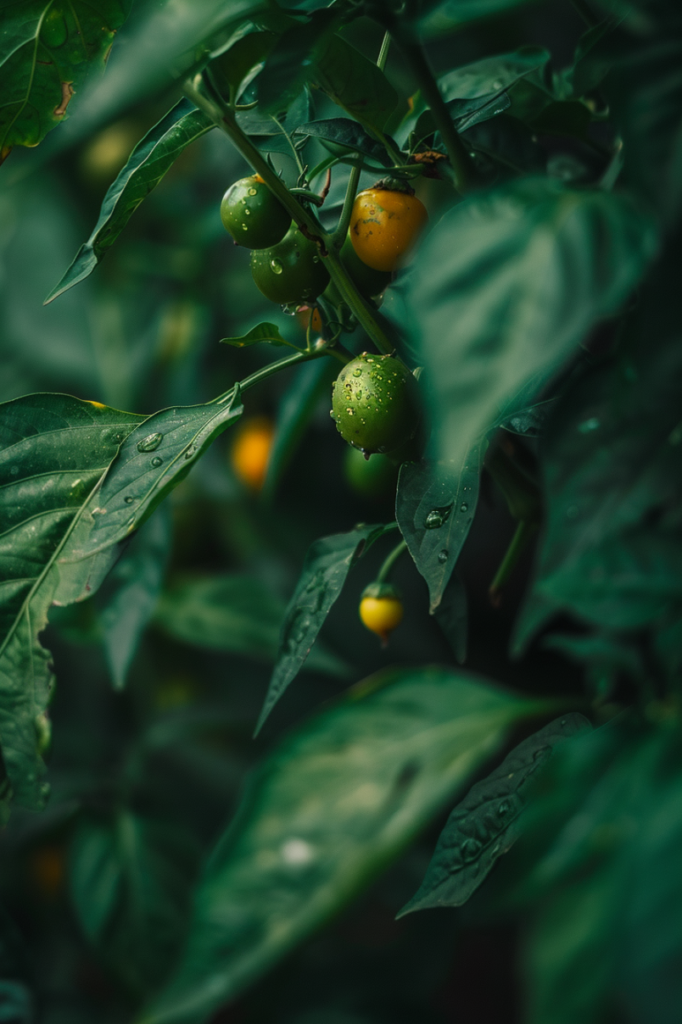
Impact of Bacterial Spot
Bacterial spot on peppers can have serious effects on your garden or farm, impacting both the quantity and quality of your harvest.
Let’s break down how this disease can affect your crops:
Reduced yields
When pepper plants get infected with bacterial spot, they tend to produce fewer peppers.
The disease weakens the plant, affecting its overall health and growth.
Damaged leaves can’t photosynthesize effectively, which is crucial for the plant’s energy and fruit production.
In severe cases, the plant may lose many of its leaves, leading to stunted growth.
Quality issues
Bacterial spot doesn’t just reduce the number of peppers; it also affects their quality.
The fruits can develop rough, raised lesions that scar the surface, making them look unattractive.
These blemishes can go deeper, causing internal decay. Even if the peppers are still edible, they may not be visually appealing enough to sell.
Consumers often reject blemished produce, whether in stores or at farmers’ markets.
Economic losses
The combination of reduced yields and poor-quality fruit leads to significant economic losses.
For commercial farmers, fewer peppers to sell means less income.
Quality problems make things worse, as damaged peppers often can’t be sold or have to be sold at a lower price.
In severe cases, entire crops might be lost, causing substantial financial losses.
Additional costs
Managing bacterial spot can be expensive.
Farmers may need to buy treatments, such as bactericides, and enforce stricter hygiene practices to control the disease.
These measures can be both costly and time-consuming.
Continuous monitoring and preventive actions require more labor and resources, adding to the overall expense.
Long-term effects
If bacterial spot outbreaks happen repeatedly, they can have long-term consequences for your farm or garden.
Persistent problems with the disease can reduce soil fertility and make it harder to manage crops year after year.
Farmers might need to rotate crops more often or switch to different crops, disrupting established farming practices and affecting overall productivity.
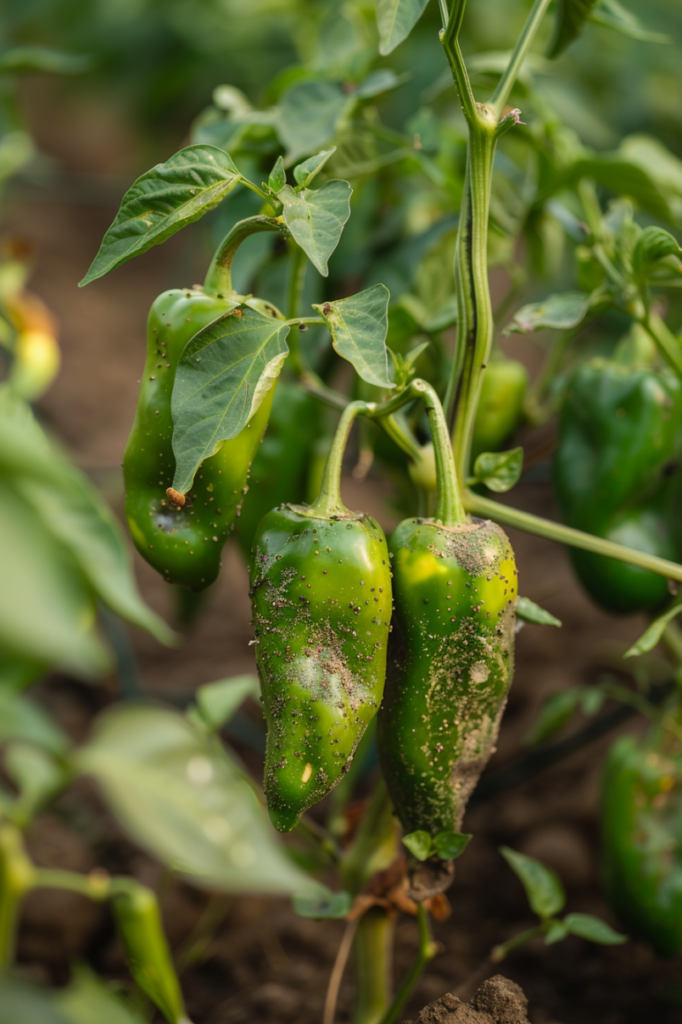
How to Prevent Bacterial Spot
Preventing bacterial spot is much easier than trying to cure it once it takes hold.
Here are some effective strategies to help keep this disease out of your garden or farm:
Cultural practices
Crop rotation
One of the best ways to prevent bacterial spot is through crop rotation.
Avoid planting peppers or tomatoes in the same location for at least two years.
This practice helps break the cycle of bacterial pathogens building up in the soil.
By rotating your crops, you give the soil time to recover and reduce the chances of the bacteria surviving from one season to the next.
Resistant varieties
Selecting pepper varieties that are resistant to bacterial spot can significantly reduce the risk of infection.
Many seed companies offer strains that are specifically bred to withstand this disease.
Choosing these resistant varieties can be a smart investment, as they require less intervention and can lead to healthier, more productive plants.
Sanitation
Good sanitation practices are crucial in preventing bacterial spot.
Make sure to remove and destroy any infected plant debris at the end of the growing season.
This prevents the bacteria from overwintering and spreading to healthy plants the following year.
Additionally, regularly clean your gardening tools to avoid transferring bacteria from one plant to another.
Organic management
Mulching
Using organic mulch around your plants can help reduce soil splashing, which is a common way bacteria spread to leaves and stems.
Mulch acts as a barrier, preventing soil-borne pathogens from coming into direct contact with your plants.
It also helps retain soil moisture and regulate temperature, creating a healthier environment for your crops.
Proper watering
How you water your plants can make a big difference in preventing bacterial spot.
Watering at the base of the plants, rather than overhead, helps keep the foliage dry.
Wet leaves create an ideal environment for bacteria to thrive.
Drip irrigation systems are particularly effective because they deliver water directly to the soil, minimizing contact with the leaves and reducing the spread of bacteria.
Adequate spacing
Giving your plants enough space to grow is another key strategy.
When plants are too close together, they create a humid environment that bacteria love.
Proper spacing ensures good air circulation, which helps keep the foliage dry and lowers the risk of bacterial infections.
Additional Tips
Monitor regularly
Keep a close eye on your plants throughout the growing season.
Early detection of any symptoms can help you take quick action to remove affected areas and prevent the spread of disease.
Regular inspections allow you to stay ahead of potential problems and keep your garden healthy.
Healthy soil
Maintaining healthy soil can also contribute to preventing bacterial spot.
Adding organic matter, such as compost, improves soil structure and fertility, helping plants grow stronger and more resistant to diseases.
Healthy soil promotes robust root systems and overall plant health, making your crops less susceptible to infections.
Avoid working with wet plants
Try to avoid handling or working with your plants when they are wet, as this can spread bacteria more easily.
If you need to prune or harvest, wait until the foliage is dry to minimize the risk of spreading bacterial pathogens.
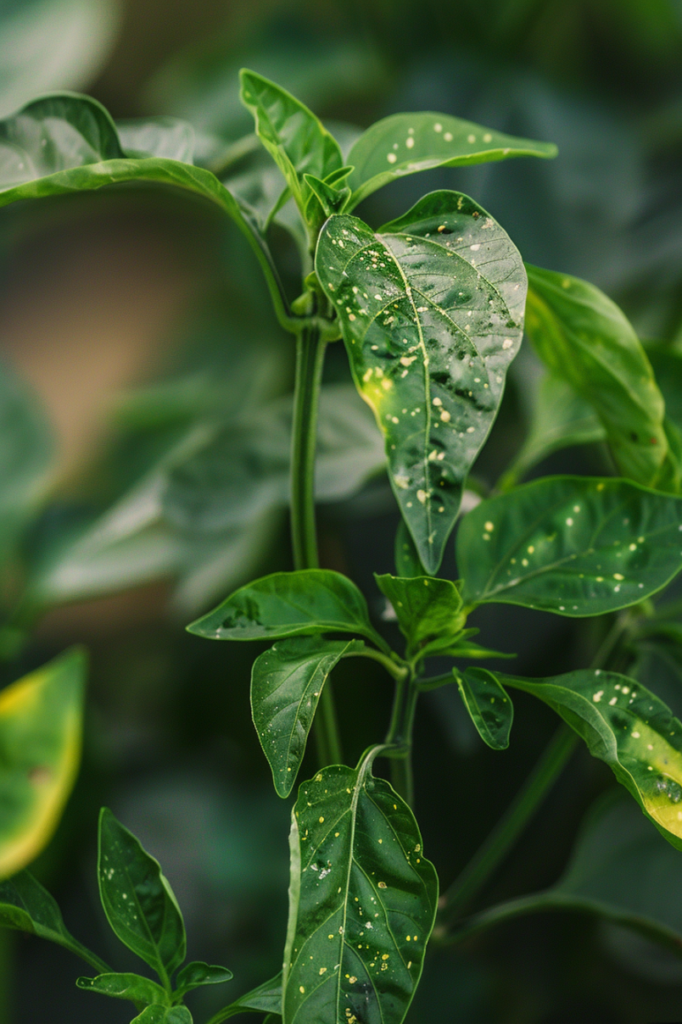
Treatment Options
Despite your best efforts, sometimes bacterial spot can still find its way into your garden.
Here are some treatment options to consider:
Copper-based sprays
Copper fungicides are a common and effective way to manage bacterial spot.
When used early and regularly, these sprays can help stop the disease from spreading.
Copper works by interfering with the bacteria’s ability to survive and multiply.
However, it’s important not to overuse copper sprays because bacteria can develop resistance.
Biological controls
For a more natural approach, you can use biological controls.
These products contain beneficial bacteria or fungi that can help fight off the harmful bacteria causing bacterial spot.
For instance, products with Bacillus subtilis can outcompete the bad bacteria, keeping your plants healthier.
Biological controls are great for organic gardeners because they are safe for the environment and beneficial insects.
Chemical treatments
In severe cases, you might need to turn to chemical bactericides.
These are specifically designed to kill bacteria and can be very effective when used properly.
Make sure to follow the manufacturer’s instructions closely to avoid harming beneficial insects and the environment.
Integrated approach
The best way to tackle bacterial spot is often through an integrated approach that uses a combination of treatments.
For example, you might start with copper-based sprays early in the season and switch to biological controls as needed.
If the disease becomes severe, you can add chemical treatments to get it under control.
Using different methods helps prevent the bacteria from becoming resistant and gives you a better chance of protecting your plants.
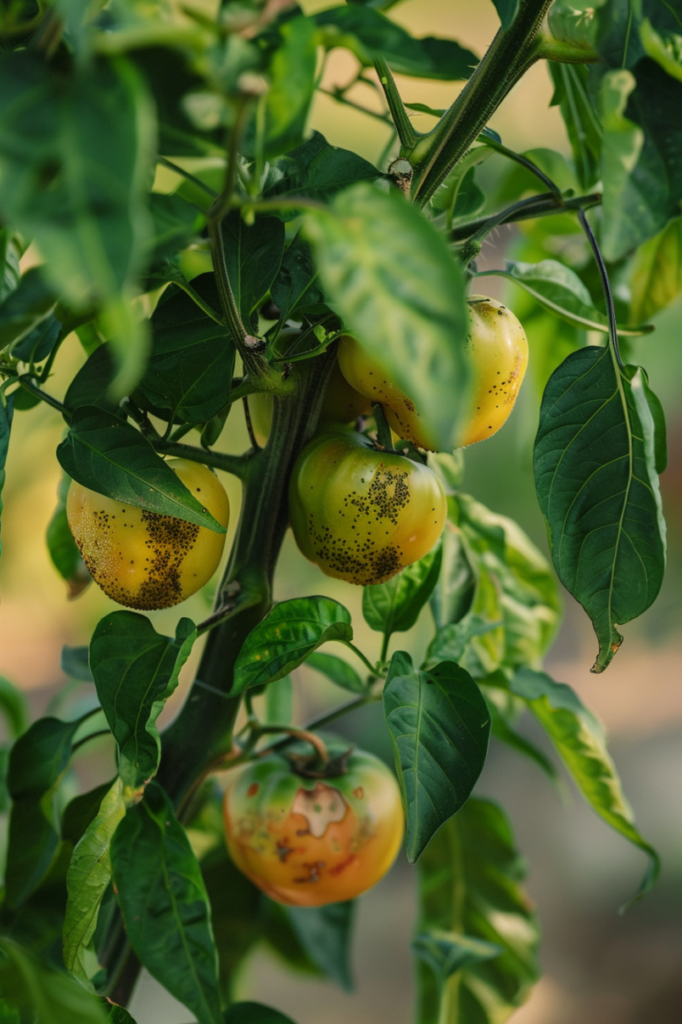
- Read also: Peppers and Pals: A Guide to Companion Planting for Peppers
- Read also: Don’t Say Goodbye! How to Overwinter Your Pepper Plants
Conclusion
Bacterial spot on peppers is a significant disease that can impact pepper yields and quality.
By understanding the causes, identification, and management of this disease, gardeners and farmers can take effective measures to prevent and treat bacterial spot.
Remember to implement cultural practices, organic management strategies, and treatment options to maintain healthy and productive pepper plants.
FAQs
Bacterial spot is caused by Xanthomonas bacteria, primarily Xanthomonas campestris pv. vesicatoria. The bacteria thrive in warm, humid conditions and can spread through water, infected plant debris, and contaminated tools.
Prevent bacterial spot by practicing crop rotation, choosing resistant varieties, maintaining good sanitation, and using organic management techniques such as mulching and proper watering.
Symptoms include small, water-soaked spots on leaves, raised lesions on fruit, stem cankers, and defoliation in severe cases.
Yes, organic treatments include using copper-based sprays, biological controls like Bacillus subtilis, and implementing cultural practices to reduce the spread of bacteria.
Bacterial spot is not harmful to humans, but it can significantly affect the quality and yield of pepper plants, making the fruits less appealing for consumption.


